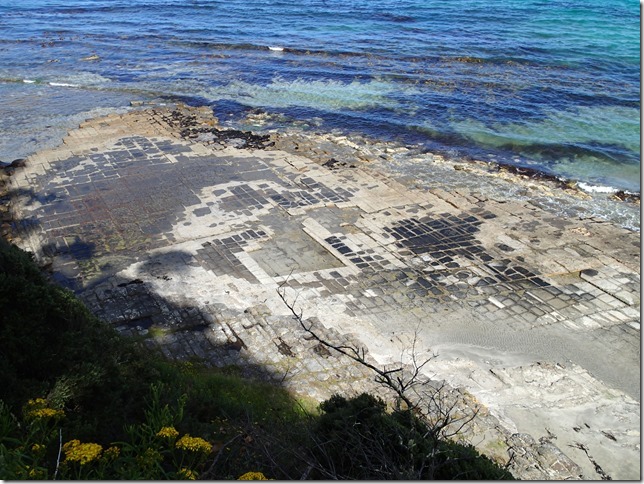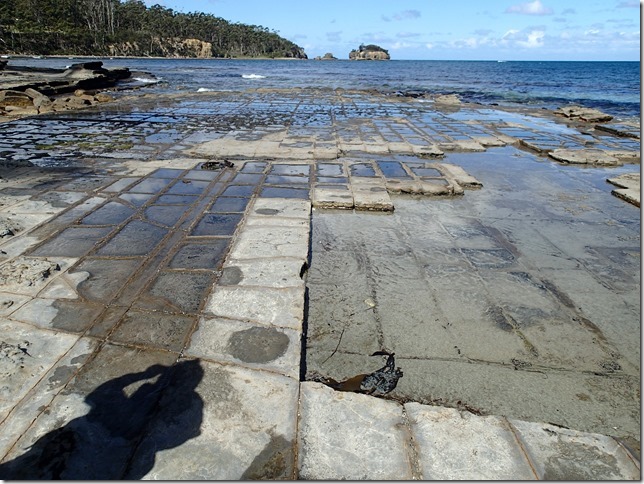A tessellated pavement

VulcanSpirit
Richard & Alison Brunstrom
Wed 28 Jan 2015 05:17
|
This feature is found on the Forestier Peninsula and is an inter-tidal rock
platform, a common enough coastal landform. But an unusual set of geological
circumstances has given rise to this very rare structure. The flat-lying
siltstone was cracked by stresses in the earth’s crust sometime between 60m and
160m years ago – in three directions. One set of cracks, seen below as joints,
lies NE, another E and the third, NW. The result, exacerbated by marine erosion,
has created a tiled appearance:
 At sea level (see photographer’s shadow for scale) ‘pans’ and ‘loafs’ can
be distinguished. Further away from the sea the pavement dries out for longer
allowing greater development of salt crystals. The salt forms on the surface and
erodes the face more quickly than the joints. The surface of the pavement is
lowered while the joints which erode more slowly form rims.
These pans contrast with the loaves nearer the sea where joints are eroded
by sand and water action more quickly than the surface making Hovis-like shapes.
Eventually the loaves are dislodged by wave action and the process
repeats.
 As you can see above, however, the whole thing is so astonishingly regular
that you’d swear it was a mason’s quarry. An amazing sight.
|